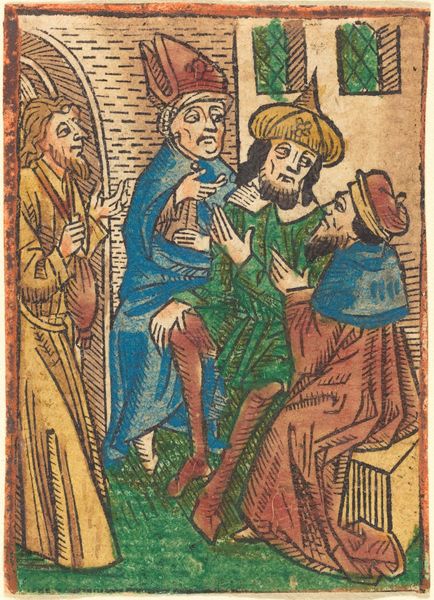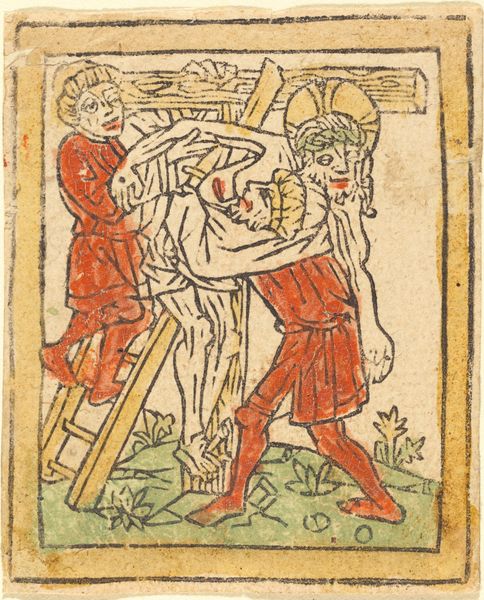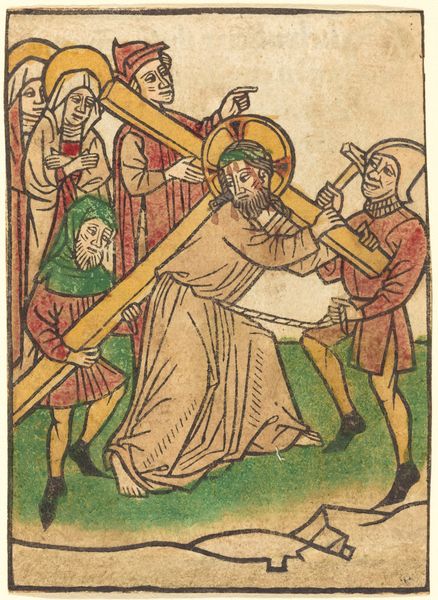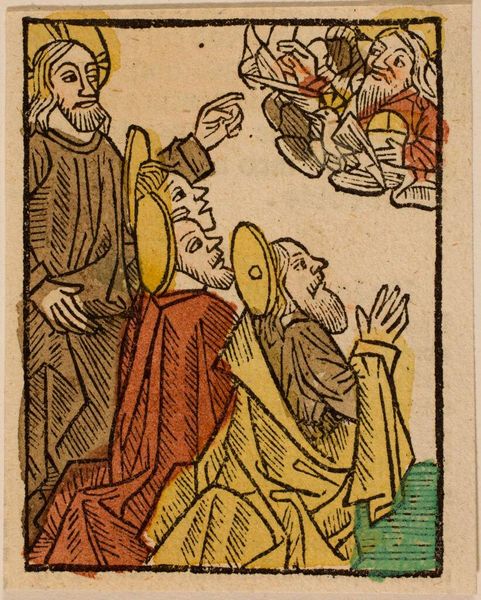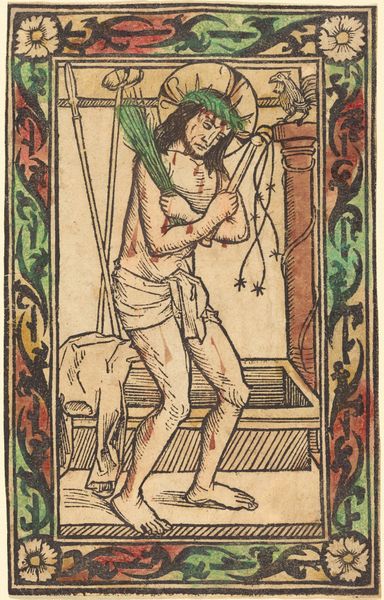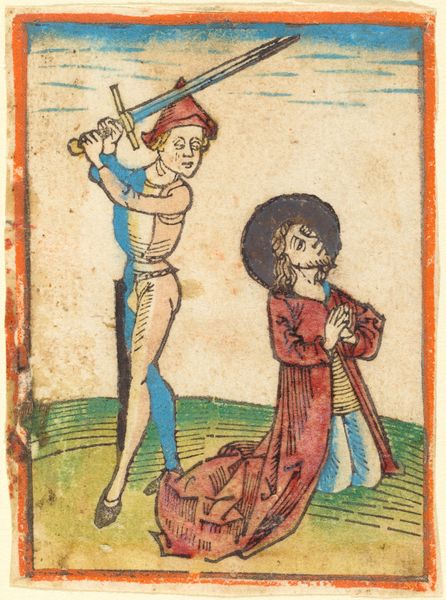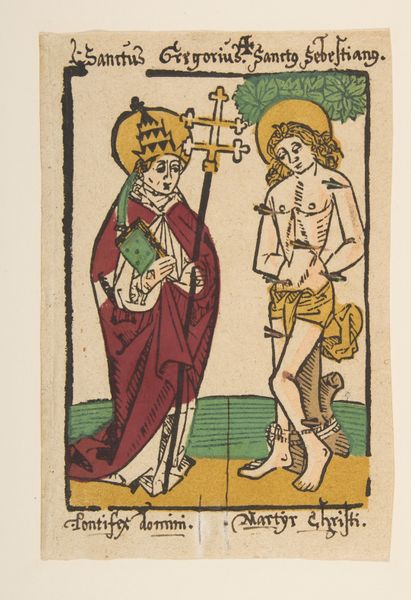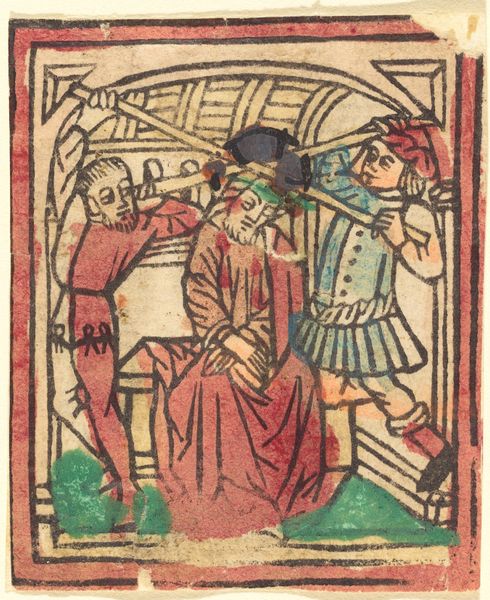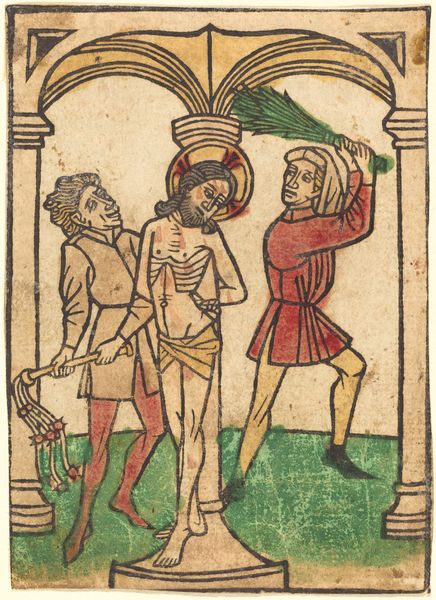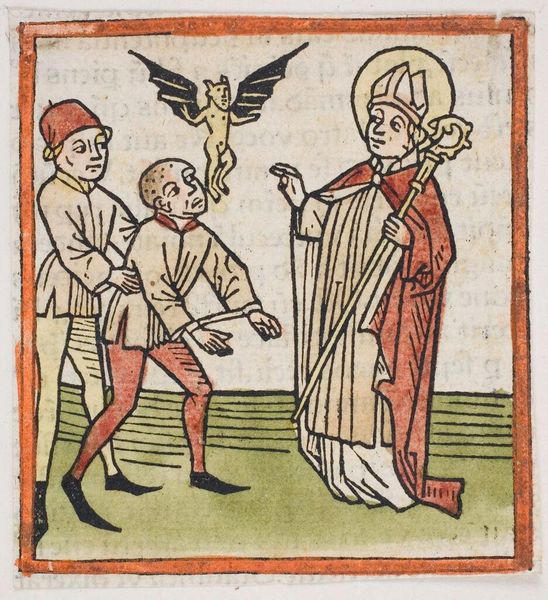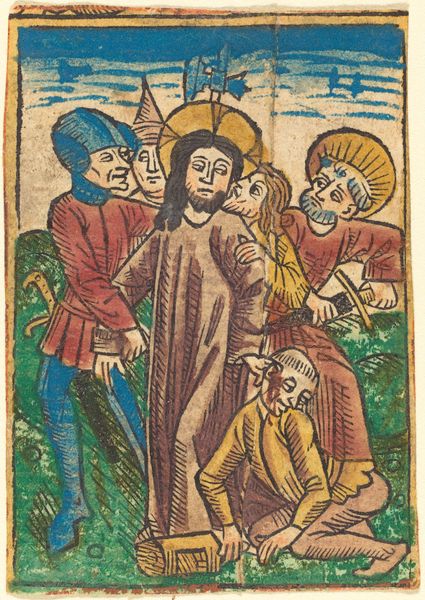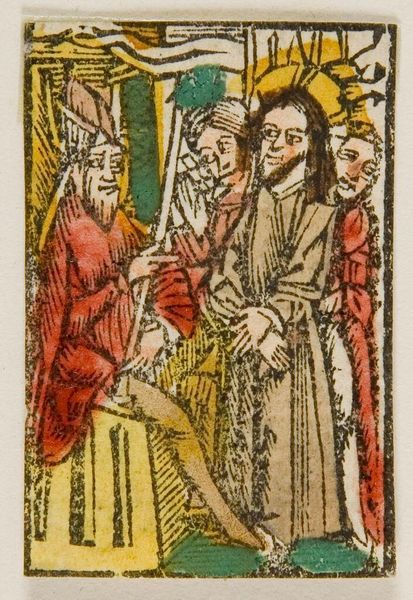
print, woodcut, engraving
#
medieval
#
narrative-art
# print
#
caricature
#
caricature
#
figuration
#
woodcut
#
history-painting
#
northern-renaissance
#
engraving
Copyright: National Gallery of Art: CC0 1.0
This woodcut of Saint Apollonia, made in Germany in the late 15th century, presents the martyrdom of the early Christian saint. Apollonia, known as the patron saint of dentists, is depicted undergoing torture as her teeth are violently extracted. The image presents a stark view into the religious and social context of the time. In the late medieval period, religious imagery served as a powerful tool for moral instruction and social control. Woodcuts like this were often mass-produced and circulated widely, reinforcing religious beliefs and social hierarchies. The depiction of violence and suffering was a common trope, intended to inspire piety and fear. The artist's identity is unknown, highlighting the role of craft guilds and workshops in artistic production at the time. To understand this image better, historians consult religious texts, social histories, and art historical analyses of the period. Ultimately, it's a vivid reminder that the meaning of art is always shaped by its social and institutional context.
Comments
No comments
Be the first to comment and join the conversation on the ultimate creative platform.

